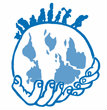"In this story, we look at how these negotiations unfolded during the last week in the midst of an ongoing Assembly.
Reports Search
During the Covid pandemic, the US pharmaceutical company Johnson & Johnson produced their Covid vaccine in South
We congratulate the Member States of the World Health Organization (WHO) for their efforts to approve the revisions t
As an international medical humanitarian organisation, Médecins Sans Frontières/Doctors Without Borders (MSF) witness
After two years of intensive negotiations – including long nights this week – the World Health Assembly (WHA) finally
Foreword by Her Excellency Ellen Johnson Sirleaf and The Right Honourable Helen Clark
Many members on 30 May called for preserving the two-tier dispute settlement system, including the binding Ap pellate
We congratulate the Member States of the World Health Organization (WHO) for their efforts to approve the revisions t
CEPI has awarded USD 6.5 million to support a Phase 2 clinical study evaluating the immunogenicity and safety of the
Pagination
- Previous page
- Page 4
- Next page
